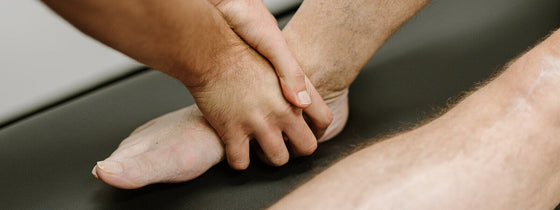Have you heard your family, friends, your trusty Physio and/or your sports doctor talk about FAIS? Let this blog help you understand this common hip complaint that can affect all - from adolescents through to the elderly.
Femoroacetabular Impingement Syndrome, or FAIS, is a motion-related clinical hip disorder. It represents symptomatic premature contact between the proximal femur and acetabulum, aka the top of your thigh bone (femur) and it's socket (acetabulum).
It's diagnosed from a triad of factors that all need to be present to confirm a FAIS diagnosis. These three factors are patient reported symptoms, clinical signs performed by a physio/sports doctor and imaging findings. Symptom descriptions could include clicking, catching, stiffness, restricted range of motion and/or locking (or giving way) of the hip. Interestingly, pain from FAIS is not just in the front of the hip, it may be felt in the back, buttock or thigh as well as the anterior hip and groin.
What does treatment include if FAIS is diagnosed?
1. Education is key to understanding this condition as there are a crazy amount of myths running around about FAIS. It's always advisable to get your facts from an expert, who will give you information that is individualised to your case/sporting situation/age/medical history/symptoms etc.
2. Local hip muscle strength, endurance and power are key modifiable factors in an athlete suffering FAIS. Specific key strength programs are achievable for most athletes. Trunk and lumbopelvic strength and stability is also paramount for patients with FAIS.
3. Range of motion optimisation through passive and active treatment. This may include soft tissue treatment, manual therapy and/or mobilisation techniques being taught to the athlete to perform themselves.
4. Balance and proprioception re-education is key in both double and single leg postures for most athletes suffering from FAIS. Finding control through their pelvis in standing postures and then adding sport specificity drills is a nice method of ensuring athletes understand where their body is in space once more.
5. Ensuring your athlete continues some cardiovascular training is key for their mind and body in management. Athletes are athletes because they like training and moving, so keep a component in their schedule as a mental release for them. It's also integral that your athlete is fit enough to begin reloading again without fatigue being a significant factor.
If you have been diagnosed with FAIS and/or think you need to be assessed by our Physiotherapy team in regard to acute or long-standing hip/groin pain, Lauren, Kirsty, Darcy and Scott are fully equipped to assist you find pain-free living again!

If you're experiencing back or neck pain with neurological signs and symptoms, a thorough neurological examination is crucial for accurate assessment and effective treatment. In this Optimal Tip learn more about what we mean by completing a neurological exam!

Squats, deadlifts, and calf raises are key movement patterns that should be part of every strength and conditioning program—regardless of age and activity level. These functional movements support joint health, improve posture and balance, and reduce the risk of injury while building strength where it matters most.

A ganglion cyst is a fluid-filled swelling that typically forms over a joint or tendon sheath, causing discomfort and pain, especially when pressing against nerves or joints. Proper assessment and treatment, including physiotherapy, are essential for managing symptoms and improving function in the presence of a ganglion in your hand, foot, or wrist.